The once resplendent “Shanichara” club of Gaya wears a forlorn look today, mapping the skies that tell a thousand untold stories of a bygone era, of Zamindars and Nawabs, of the “Jaans and the Khans”, of gossamer evenings and an enchanted world sequestered in the famous holy town where the Vishnupad temple and the Mahabodhi Mandir, both have jostled for primacy to their chosen worshippers.
The Haveli of Nawab Jaffer, the well known patron of the arts and the host of Gaya’s memorable soirees…
One can still feel the strain of the music in the air “ Bhula gaiye bindia raja ke pokharia me”….
The Haveli has a desolate air around it. It was home to countless musical evenings where the famed fatales Dhela Bai, Mehrunnisaa and the likes of them crooned for the elite and the rich of Gaya and nearby princely estates and night long, mogra scented mehfils were the ‘Riwayat” of the Haveli.
Umesh Narayan Singh, the Bhumihar Zamindar and owner of the Khatangi Kothi of Gaya was the founder of the ‘Shanichara Club’ where the renowned tawaifs of the day and famous singer of Banaras Siddheshwari, Raoolan, Badi Moti, Rjeshwari, Vidyadhari and others who were equally famous like Begam Akhtar, Kesar Bai, Zohra Bai etc engaged the city’s cognoscenti every Saturday and Thumri strains wafted through the club precincts one upon a time.
There is a bank now in the Tower Chowk premises of “Shanichara Club”.
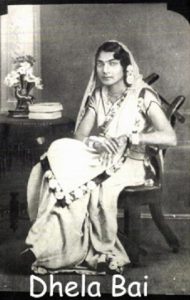
Gaya was home to the serenading divas like ‘Dhela Bai’ the most famous courtesan singer who lived in Gaya and who got her name for the sweet voice that she had like ‘gud ka dhela’. Though not very ravishingly beautiful, Dhela Bai was tall and had a commanding presence. In an era where the mehfil belonged to the physically endowed and beautiful sirens and Tawaifs who sang Thumri, dadra and other genres of semi- classical music Dhela Bai rose to stardom for her powerful ‘pukar” and her velvet voice that sang” Thadhe raho tum shyam gagariya main ghar dhari aoon’ and the world around her in the mehfil stood in silent deference to her art.
Thumri as a genre of music and an art form and one of the four types of Hindustani Classical music, others being Dhrupad, Khayal and Tappa can be traced to the 16th century though it developed into its full glory in the 19th century and owes much to its popularity and charm to the reign of Nawab Wajid Ali Shah of Lucknow who was its most ardent patron and its artist too.
Thumri emanated from the ‘Gangetic” belt and came to be known as the ‘Poorab- Ang” Thumri and Lucknow, Banarasin Uttar Pradesh and Gaya in Bihar became its major locations.
The word Thumri is primarily derived from ‘Thumak’ or the sway of hips and ‘ri’ is a calling name for the female confidante or the ‘sakhi’ of the ‘Nayika’ or the female protagonist of the Thumri texts. Thumris are seeped in “Shringar Rasa” (amour) and depicts the myriad moods of the nayika as she endeavours to entice, lure and capture her beloved’s attention and keep him beholden to her by enacting a series of emotions of love and longing,erotic union and separation and intrigue and deceit.
An amorous makeover dominates Thumri compositions be it Thumri describing the dalliance between a man or a woman or between the divine pair of Radha and Krishna. Its lyrics are in Awadhi, Braj Bhasha and Bhojpuri languages present in the Gangetic region.
The Bol-Baant Thumri of Lucknow also called the “Lucknow Bandish ki Thumri” was fast paced and usually set to “teentaal or ektaal” and compatible with the Kathak dance as its beat cycle was complimentary to the dance footwork. The “Bol- Banao Thumri” developed in Banaras and also Gaya where a single line of the lyrics was elaborated in a slow tempo foe vocal rendition and set to a 16 beat cycle “Jat taal” in a slow tempo.
The Gaya Thumri was sung in a slow tempo but of 8 beat cycle “Keherwa” taal and came to be known as the “Thah Ki Thumri”.
Gaya was the musical epicenter around the middle of the 19th century where stalwarts like Hanumandas Ji, Kanhai Lal Dhendhi, Soni Maharaj (son of Hanumandas ji) and Ramuji Mishra, the famous vocalist who had come from Banaras and settled down in Gaya excelled in Harmonium, Israj and Thumri respectively. The Gaywal Pandas (religious priests who conducted last rites for the dead) were patrons of these musicians and often invited singers from all over the country to visit Gaya where the hospitality of the Gaywal Pandas and the love for music they had made the top notch artists of those times camp in Gaya for months and perform in the night long mehfils of Gayawal Pandas and Rasiks.
While the Banaras Thumri blend prospered with royal patronage, in the 19th century Gaya, it was the affluent Gaywal Panda community who were the Thumri’s chief patrons. Kanhai Lal Dhendhi an affluent Gaywal Panda (priestly clan performing Hindu last rites), Govind Lal Nakfofa, Sardar Panda or Chief Panda and a very affluent man and Madholal Katariar, a rich Panda who was a patron of Jaddan Bai mother of Nargis and a disciple of Soni Maharaj of Gaya who was an ace harmonium player proves that among the Gayawal Pandas music was not limited to connoisseurship but also went into the realm of practicing the arts.
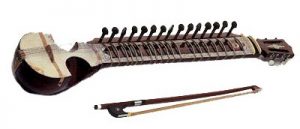
Kanhai Lal Dhendhi was an avid Israj player, an instrument typical to Gaya where it looked like a Sarangi another bow instrument and like Sarangi used in accompaniment of Thumri performance.
Most of the moneyed Gaywal Pandas thus made Gaya a sought after destination for top musicians of those times like Ustad Faiyaaz Khan of Agra Gharana and Kesar Bai Kerkar of the Jaipur Atrauli Gharana and Bhaiya Saheb Ganpat Rao of the Gwalior royal family, himself an accompalished Thumri lyricist by the name of “Sughad Piya” and a superb harmonium player who spent months in Gaya under the patronage of these affluent and “Rasik” Gaywal pandas.
Bihar was the hub of classical music mainly due to the patronage of its princely estates where the landed Zamindars and similar estates often held concerts and mehfils. Khayal, Drupad, Thumri and instrumental music found patronage in these affluent Rajwadas. Betia Maharaj Anand Kishore was a well known patron. Darbhanga, Panchgachiya and Baneli were other rich and powerful riyasats where classical music was the way of life. Zamindars like the Panchgachiya Estate Raibahadur Laxminarayan Singh, Uma Shankar of Muzaffarpur and Sardar Panda Govind Lal Nakfofa were the well known patron of their times. Infact they themselves were well versed in music.
The Gaya and Muzaffarpur (a trading affluent town of Bihar) style of Thumri also called the “Thah ki Thumri”, a slow and languid rendition that resonated with the earthiness of folk music of Bihar mainly the Chapra Poorbi songs had oodles of folk charm. The pristine meend based or glide oriented singing style was devoid of musical flourishes and embellishments. It was ‘bhav pradhan’ or emotional rendering without khatkas, murkis and gitgiris. It had a lot of pukar though. Thus the Gaya Thumri style was quite different from its Banaras counterpart.
It is indeed lamentable that the glorious era of music in Bihar and particularly the Patna, Gaya, Panch gachia, Chapra and Muzaffarpur Thumri suffered a massive setback as the princely estates went into seclusion after the abolition of the ‘Privy purse”.
The patrons of music were unable to support the musicians. The fine art of Thumri suffered the most as the courtesans of yesteryears had to abandon their art. Due to the absence of musical evenings that were a lifestyle feature of Bihar elite in these principal locations where Thumri had flourished and was sung the practitioners of the art became fewer still and the songs were forgotten and callously treated by their surviving kin.
The Poorab-Ang Thumri of Gaya was known as the “Thah ki Thumri”. The expression “Thah” means a leisurely and slow pace that this style of Thumri had in its rendering compared to the pacier “Pachahi Thumri” or the Punjab-Ang Thumri and of the Banaras style Thumri which was more embellished with “Khatka and Murki” an arrangement of notes that were an integral part of Thumri singing.
[adrotate group=”9″]
The key differentiation in the Gaya-Ang Thumri is the lack of these “Khatkas and Murkis” in its rendition.The composition os sung in a slow tempo and the lyrics unfold slowly and gradually within the structure of the raga. There is a great deal of patient, delineation of the raga through the Bol-Banao technique. The Bols are without sudden bursts of surs or musical notes mainly the absence of “Khatka and Murki” gives a unique solemnity to the performance.
The Dhupad gayaki of Bihar has influenced the Thumri Gayaki of Gaya as there have been two distinct and prestigious schools of Dhupad in Bihar. The Betia Gharana and the Amta Gharana of Dhupad.
The “meend” based Gayaki of Dhupad has influenced the Gaya style Thumri. A meend is when a note is stretched to produce a rounded sound. Some of the most noted Dhrupad singers of Bihar Pt. Ramchatur Mallik and Pt. Siyaram Tiwari sang the Thumri too.
The rituals of the village folk life and the folk culture are deeply embedded in the Thumri literature therby giving it an authentic flavor of the soil and making it earthier in its appeal.
Since Patna, Gaya, Chapra and Muzaffarpur had a tradition of the courtesans and Thumri was their mainstay the colloquial dialects are an important facet of this Thumri. The texts are sensuous and provocative given the milieu in which these Thumris were sung and that these courtesans catered to rich patrons and often wooed them during their singing sessions.
An example of the earthiness of Gaya Thumri is this composition in Raga Khamaj:
Saiyan manat nahin… Araj karat main haar gayi… Lakh manayie kona manat… Bali bali paiyan padoon…
Another Thumri that resonates with the raw and earthy charm of Gaya style Thumri is :
Saiyan tore palanga (bed).. Dekhat dar lage… Nayi nayi main aayee… Nahira se sasura… Main hoon umar ki thodi… Saas nanad more age peeche… Kaise jaoon tore sejwa
Taals employed in the Gaya style “Thah ki Thumri” :
Most Thumri of Gaya are sung in the “Keherwa Taal” which is a eight beat cycle taal but the laya or the tempo of the “Keharwa” is a slow one and the Theka or the beat on the table is a very different sounding one from the regular “Keharwa” theka or beat.
The beat of 8 matras reads like this:
Dha Dhin dhin na tete
Ta Tin Dhin na aa
Another commonly used taal in singing the Dadras of Gaya Ang is the Dadra taal but this is also a slow tempo taal in the treatment the Gaya singers give to the Dadra.
The slow tempo was prefereed by the Gaya singers as it gave them a wider canvas to display their skills of Bol- Banao. This tempo of the taal is extremely difficult to follow and until the table player is shown the “SAM” or the singer is trained in the Tal that the Gaya singers follow it would be impossible for a singer to sing it or a table player to play it.
A well known anecdote from Gaya is that the great Ustad Ahmad Jan Thirakwa had gone to Gaya and in the course of conversation he mentioned to Dr. Munishwar Dayal the skilled harmonium player and musicologist that “Munnu babu there is no Khayal in your Bihar only Thumri Umri. Dr. Dayal replied Ustad ji its true that Kirana,Patiala and Gwalior Gharana are known for its Khayal rendering but this Thumri Umri as you call it is so difficult that unless you were told about the Laya you will not be able to play.
Kesar Bai the legendary singer was present there and asked Dr. Dyal to prove it. Dr. Dayal started a Thumri and Thirakwa Saheb tried one Theka after another but could not succeed so finally Dr. Dayal showed him the Theka and then he was able to play.

Like Banaras Bihar was home to great courtesans. Begam Akhtar had spent her adolescent days in Gaya taking taleem of music and Gauhar Jan had done her first performance in the court of Maharaja Darbhanga. Such was the patronage and the love for music in Bihar. Benazir Bai of Darbhanga, Malka Jan of Patna, Dhela Bai of Gaya, Mohammad Bandi of Patna and Panna Bai of Muzaffarpur were famous courtesans and singers.
Kajjan of Bhagalpur Kamla Jharia of Jharia were unmatchable Thumri and Dadra performers. The best known patrons were themselves musicians such as Kumar Shyamanand Singh of Baneli, Rai Bahadur Laxmi narayan Singh of Panch gachia and Raja Bisheshwar Singh of Darbhanga.
The elite class owned the “Jalsaghars” or the place of celebrations where these musical evenings were an everyday affair. The decorations of these performing halls were the high point of the event.
The night mehfil used to be one of dance where the dancer used dance and this was called the “khadi mehfil”. The day or morning mehfil was called the ‘Bithi mehfil or bhairavi ki mehfil’ in which the dancer used to do ‘abhinaya’ and xplain emotive text through sit down dance and gestures.holal Katariar,Govindlal Nakfofa, Pannalal Bareek, Ghafoor Miyan and Dr. Munishwar Dayal were renowned harmonium players of Gaya. The harmonium was meant for Thumri accompaniment as the Khatka, Murkis and Sapati tans produced by the harmonium were marvelous.
The visit of Bhaiya sahib Ganpat Rao to Gaya was a catalyst. It created a new chapter in Gaya Thumri. His harmonium playing was superb and Madholal Katariar the Gaywal panda became his disciple. Bhaiya sahib stayed in Gaya for a long time and inspired many with his outstanding harmonium playing and Thumris. Soni Maharaj of Gaya was also inspired by him and became an outstanding harmonium player. He used to play the Israj earlier.
The Harmonium was used as an accompanying instrument but also as a “sawaal- jawab” tool and there were superb harmonium players in Gaya. The noted harmonium players in Gaya used to engage the visiting courtesans of those times or even among themselves with cycles of never ending innovative bols on the harmonium, sometimes surprising the best of singers. [adrotate group=”9″]
Infact, one would see multiple harmonium players accompanying one single Thumri singer or 4-5 harmonium players playing in the “kachehri style’ where one would play one line and others would reply with matching Bols thus innovating the same line in a variery of ways!
These harmonium only soirees played a very important role in the development of Gaya style of Thumri and musicians like Govind Lal Nakfofa, Panna Lal Bareek, Madho Lal .katariar and Shankar lal parbatia have gone on to live in our memory.
Gone are the days of the Magahi- pan chewing baithaks and concerts of Gaya where concerts under crystal chandelier lit halls creating a life of luxe living in musical harmony, Gone are the days where one single Thumri would be sung for the entire night and even then the “Antara” or the concluding part of the Thumri would not be sung yet … The “Sthayee’ or the introductory part itself would keep everyone engaged and enthralled!
Some of the naamcheen courtesans of Bihar like Benazeer Bai, Panna Bai, Mohammad Bandi of Patna, Dhela Bai and Pt. Ramuji Mishra the noted Gaya singer of Thumri and Tappa who was called “Poorab ke Phatak “ by Bade Ghulam Ali Khan Saheb, coloured the evenings in Thumri drenched shades and the Gaya style Thumri still resonates down memory lane echoing the voices of the divas giving us a privileged peep into the many vignettes that adorned the world of the courtesan and her indelible earthy Thumri….
| Enjoy “Piraye mori ankhiyan raja hamse na bolo”, the famous Gaya Dadra that Pt. Ramuji Mishra of Gaya used to sing, sung by Dr. Kumud Diwan in Virginia USA.|



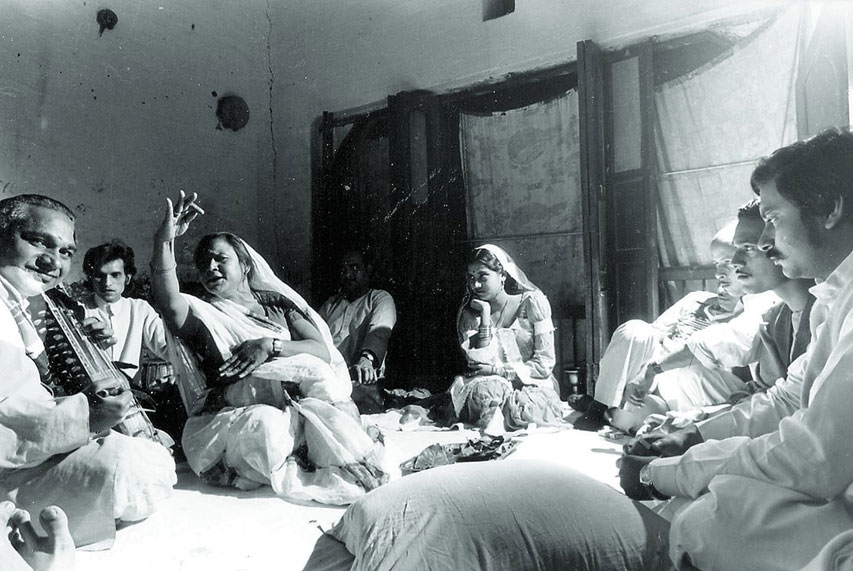
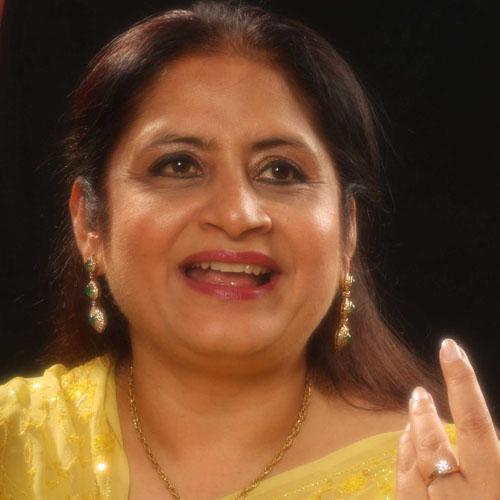


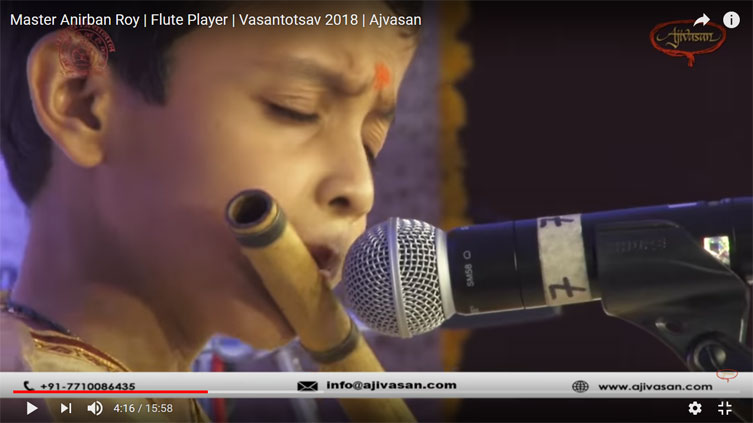
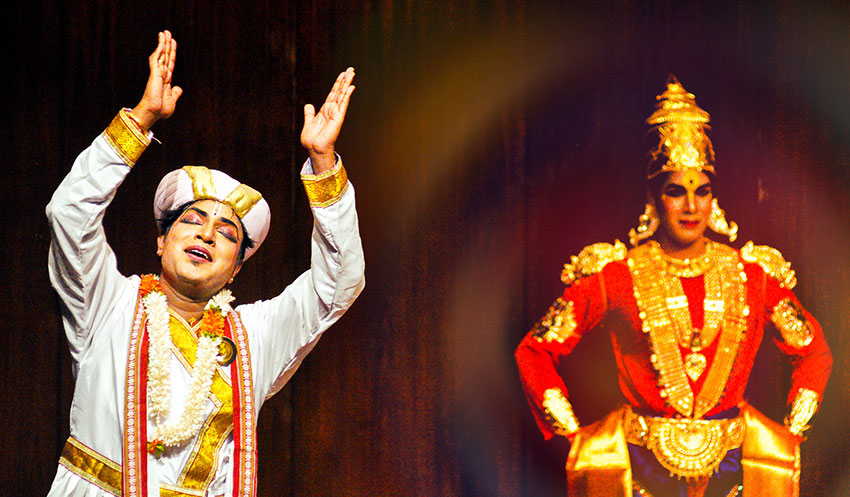


1 thought on “The Earthy Thumri of Gaya – A Lost Tradition”
Log chupney lage hain kun kisi unhein samaj ka dar hai